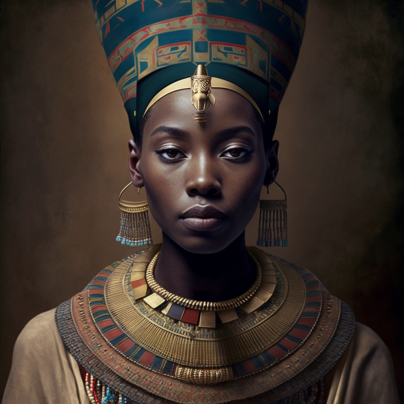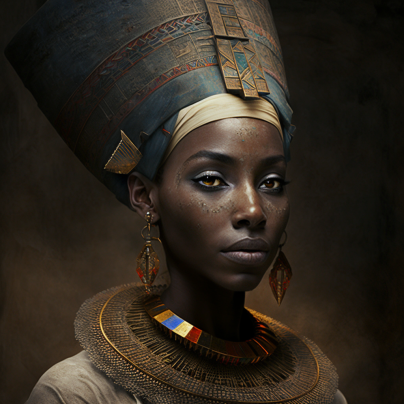Pharaoh Hatshepsut
the first female pharaoh


Hatshepsut, the first female pharaoh in ancient Kemet (Egypt), was born around 1508 BCE. She grew up in a royal household as the daughter of Pharaoh Thutmose I and Queen Ahmose. Despite being born into the royal family, Hatshepsut's path to power was not straightforward.
After the death of her father, her half-brother Thutmose II became pharaoh. Thutmose II was not in good health and Hatshepsut served as his regent, effectively ruling as a co-pharaoh. When Thutmose II died, Hatshepsut declared herself pharaoh and ruled as a sole ruler, although she faced opposition from some members of the royal court who believed that a woman should not hold such a position of power.
During her reign, Hatshepsut initiated many ambitious building projects, including the construction of the Temple of Deir el-Bahri in Thebes. This temple is famous for its terraced design and its stunning reliefs that depict Hatshepsut's reign and accomplishments. She also commissioned expeditions to Punt, a region located in what is now modern-day Somalia, to bring back exotic goods such as myrrh and incense.
Hatshepsut's reign was also marked by a focus on trade and diplomacy. She worked to establish trade relationships with neighboring kingdoms and was successful in expanding Kemet's influence and wealth through these efforts.
One of the most notable aspects of Hatshepsut's reign was her use of propaganda to legitimize her rule. She presented herself as a divine ruler, often depicted with a beard and wearing male clothing, and her reign was characterized by the construction of monuments and artwork that emphasized her power and authority.
Despite her accomplishments, Hatshepsut's reign was not without challenges. She faced opposition from some members of the royal court, and there are indications that there were attempts to erase her from the historical record after her death. Nevertheless, her reign has continued to fascinate historians and Egyptologists, and she is remembered as a trailblazer who shattered gender barriers in ancient Kemet.
In conclusion, Hatshepsut was the first female pharaoh in ancient Kemet. She grew up in a royal household and came to power through her role as regent and her subsequent declaration as pharaoh. During her reign, she initiated ambitious building projects, established trade relationships with neighboring kingdoms, and used propaganda to legitimize her rule. Her reign was not without challenges, but her legacy as a powerful and influential ruler continues to be studied and celebrated today.

Like the content? Feel free to comment your thoughts and/or share!